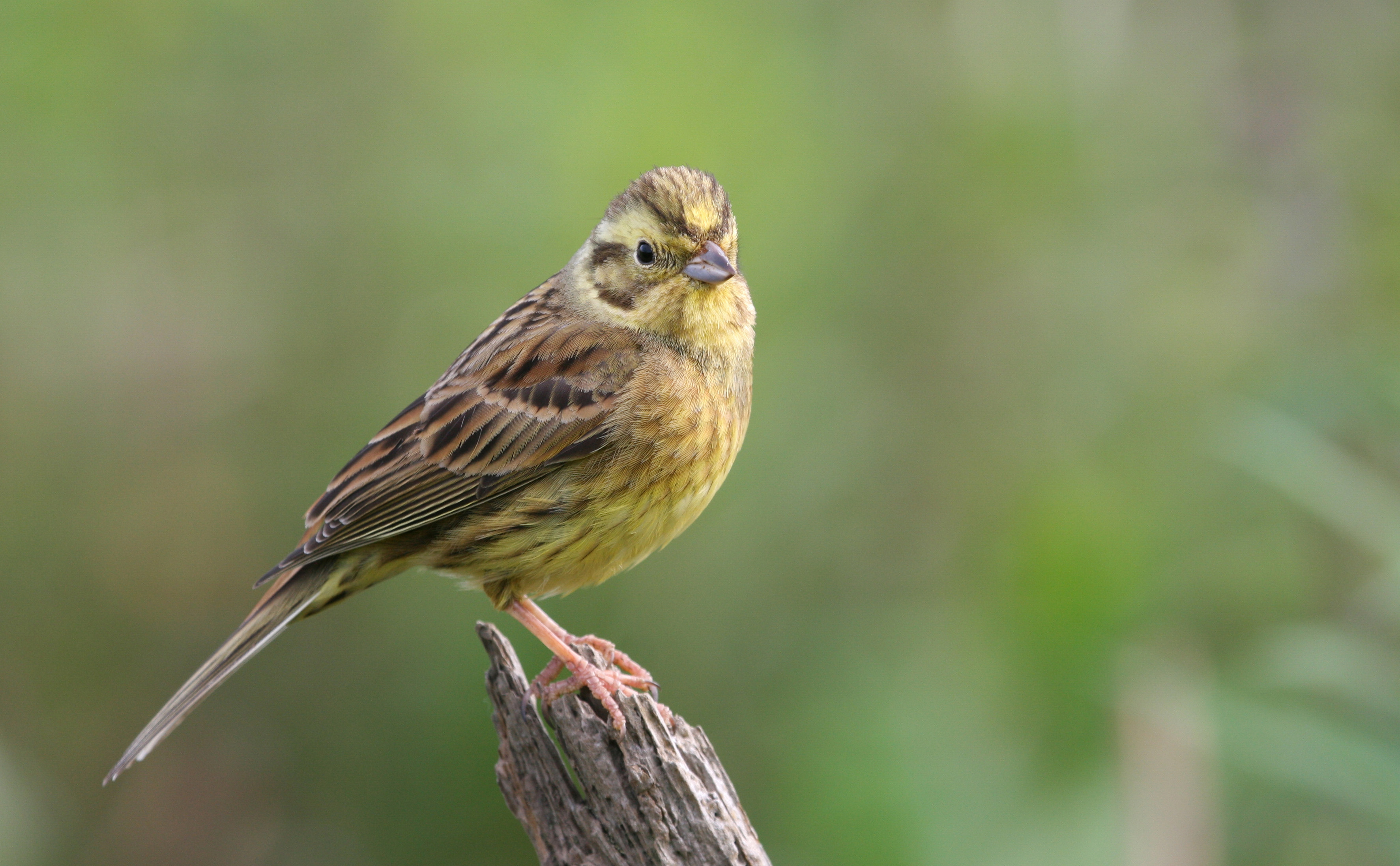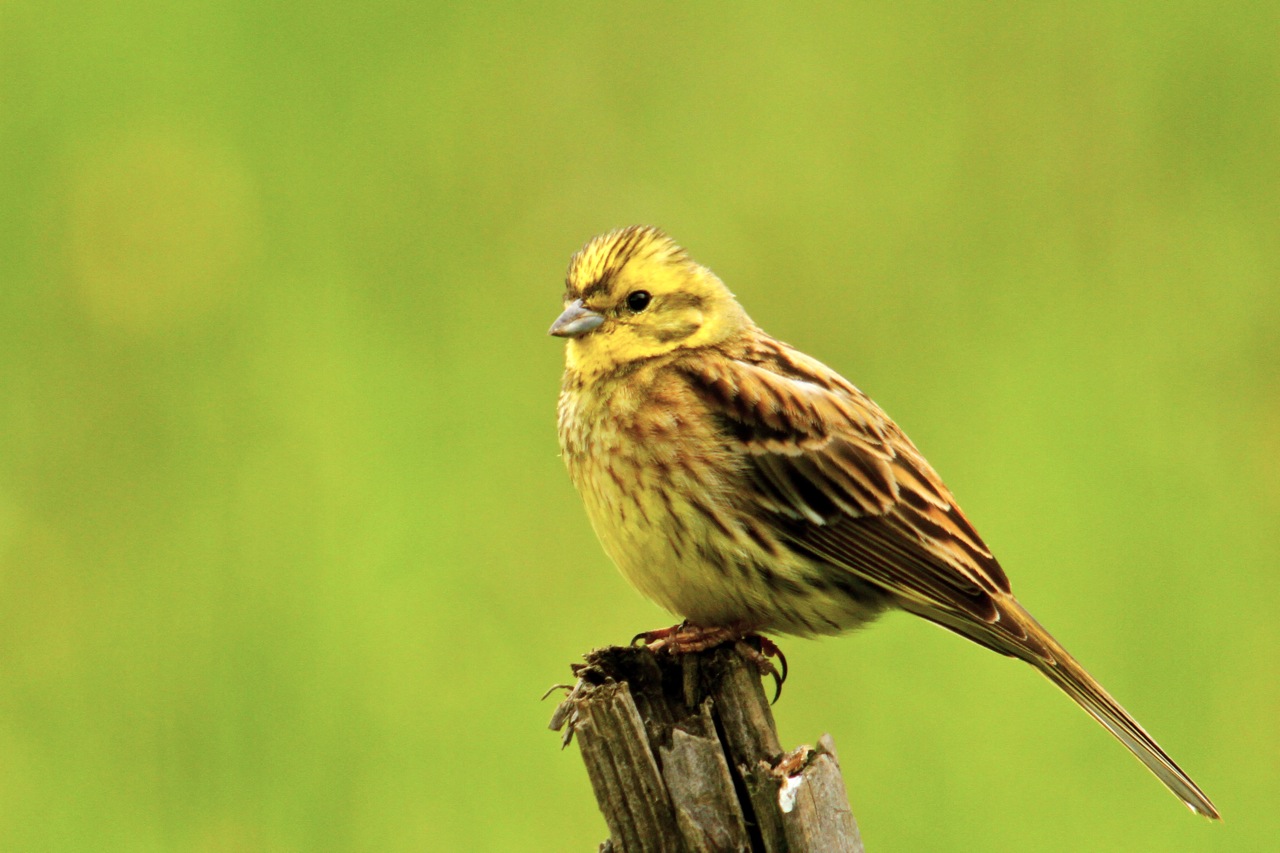
Emberiza citrinella
TAXONOMY
Emberiza citrinella Linnaeus, 1758, Sweden. Three subspecies.
OTHER COMMON NAMES
French: Bruant jaune; German: Goldammer; Spanish: Escribano
Cerillo.
PHYSICAL CHARACTERISTICS
6.3–6.5 in (16–16.5 cm); 0.88–1.1 oz (25–31 g). Sexes differ in
color. Males have a streaked yellow head, a cinnamon-washed
black and breast, and a chestnut rump. Females and juveniles
have much less yellow and are more heavily streaked.
DISTRIBUTION
E. c. citrinella breeds from southeast England, northern and
western Europe east to Russia and south to northern Portugal
and Spain, central Italy, northern Greece, Bulgaria, Rumania,
Poland, and south in Russia to Moscow. In eastern and southeastern
Europe they intergrade with E. c. erythrogenys, which is
found west to central Siberia. They winter from central Europe
south to northern Africa, Iraq, and northern Mongolia. E. c.
caliginosa is resident in Ireland, Scotland, Wales, and northern
and western England.
HABITAT
Open country in hedgerows, the edge of woods, or in bushes.
In winter they are found in cultivated fields or woodland edge.
BEHAVIOR
During the breeding season they are territorial, and males
defend the territory by singing from an exposed perch, such as
a wire. In fall and winter they form loose flocks, sometimes of
up to 1,000 individuals.
FEEDING ECOLOGY AND DIET
Feed almost entirely on the ground, in pastures, cultivated
ground, stubble, or waste ground. In summer they eat seeds,
insects, and other invertebrates, but in winter they chiefly eat
seeds.
REPRODUCTIVE BIOLOGY
Socially Monogamous. Eggs are laid from April through early
September. The nest is nearly always placed on the ground and
is well hidden among the vegetation; two to six (usually four to
five) eggs are laid. Incubation lasts 12–14 days, and the young
fledge at 11–13 days.
CONSERVATION STATUS
Not threatened. Their numbers have declined in many European
countries but have increased in Finland, all apparently as
a consequence of changing farming practices.
SIGNIFICANCE TO HUMANS
None known.
Photo Gallery of - Yellowhammer




 Animalia Life
Animalia Life